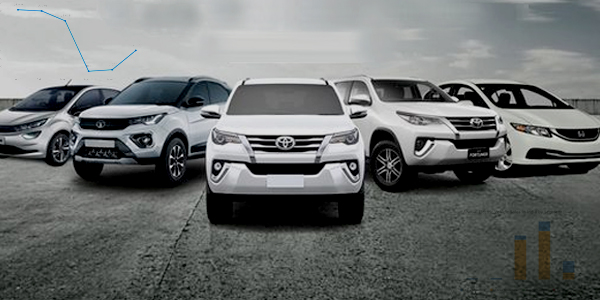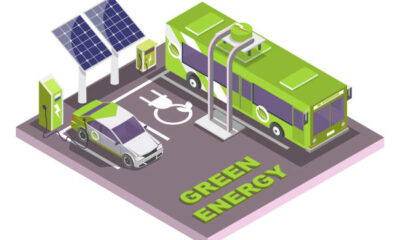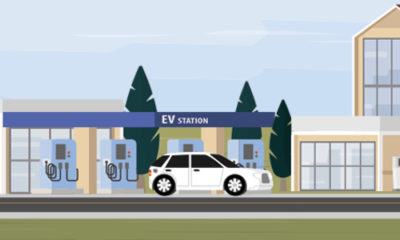News
Second wave causes blip to ’21 EV plans


Source:https://www.energybite.co.in/blog-post/second-wave-causes-blip-to-21-ev-plans/
Low operational cost and environmental benefits have given a huge boost to EV sales in the country. A major hindrance, however, still remains; and that is the lack of a decent charging infrastructure. But this too is being gradually sorted with active participation from private players. The Government need to engage with them so that e-mobility goal reaches its fruition once the pandemic havoc is behind us.
Electric Vehicles (EVs) are the next big thing in the automobile sector all over the world. Established, as well as new players are adding new EVs to their line-up at a regular pace. The EVs are beneficial not only environmentally, but also from the financial point of view. The cost of operating an EV is around Rs. 1 per kilometre, which is highly economical, particularly for the budget-conscious consumers. That is, perhaps, why EV sales are on the rise in India and the automobile sector is witnessing a steady growth in their demand.
However, the lack of adequate charging infrastructure makes many Indians hesitant on EV adoption. According to the Central Electricity Authority (CEA), India has 933 EV charging stations for both two-wheelers and four-wheelers combined. What the country needs is a decent EV charging infrastructure that is future-ready and capable of handling a much larger number of EVs.
- The cost of operating an EV is around Rs. 1 per kilometre, which is highly economical, particularly for the budget-conscious consumers.
- Many companies, including Tata Power, Charzer, Ather Grid, and Ola Electric etc. have commenced setting up EV charging stations.
- The Government had also announced a proposal to set up EV charging stations across all the 69,000 fuel stations in the country.
- The second wave of pandemic, however, has virtually halted the adoption of EVs besides hitting every other sector of the economy.
To achieve that, the Government needs to partner with both the private and public sector players to develop a state-of-art EV charging infrastructure in the country. Many companies, including Tata Power, Charzer, Ather Grid, and Ola Electric etc. have already commenced setting up EV charging stations. Ola, in fact, has announced that it will have the world’s largest two-wheeler EV charging network, Ola Hypercharger, in the country. The network will comprise over 1 lakh charging stations and it will be spread over more than 400 cities across the country. Tata Power has set up more than 300 EV charging stations across nine states and 40 cities. Tata’s charging network works for both two-wheelers and four-wheelers.
Another start-up, Charzer, is a Bengaluru-based company that provides portable Kirana chargers (3.3kV) for societies, malls, shop-owners and restaurants. Also, apart from its EV two-wheelers launch, Ather Energy has set up more than 130 fast charging stations. Ather Grid is one of the largest fast-charging networks in the country.
The Government’s FAME-II (Faster Adoption and Manufacturing of (Hybrid &) Electric Vehicles) Scheme, apart from taking other initiatives, is attempting to educate the public about the benefits of EVs over fossil-fuel based vehicles. It is also offering various tax benefits and subsidies to boost the sale of EVs in the country. It had also announced a proposal to set up EV charging stations across all the 69,000 fuel stations in the country.
With all these multifarious initiatives, 2021 was expected to be a year of better opportunities for the automobile sector, particularly in the EV arena. The second wave of coronavirus pandemic, however, has virtually halted the adoption of EVs besides hitting every other sector of the economy. One only hopes for the earliest return to normalcy so that India could achieve its ambitious goal of electric mobility with no further hindrances!
-



 News4 weeks ago
News4 weeks agoKW Delhi 6 Mall Onboards New Brands
-



 News4 weeks ago
News4 weeks agoManasum Senior Living Launches IKIGAI GOA, A Senior Living Community in North Goa, in collaboration with Prescon Homes
-



 News4 weeks ago
News4 weeks agoBridging India Divide: Top 5 Tier- 2 Cities to Focus On
-



 News4 weeks ago
News4 weeks agoCommercial Realty Gets Tech Savvy: Fast Construction, Enhanced Convenience
-



 News3 weeks ago
News3 weeks agoGodrej Properties Sells Rs 3k cr+ Homes of Godrej Zenith, Gurugram, within 3 days
-



 News4 weeks ago
News4 weeks agoMultipoint Connection – A Definite Boon
-



 News3 weeks ago
News3 weeks agoRBI’s Status Quo on Key Policy Rates to Help Maintain the Real Estate Growth Momentum, Say Industry Stalwarts
-



 News2 weeks ago
News2 weeks agoOlive Announces Dhruv Kalro as Co-Founder




























